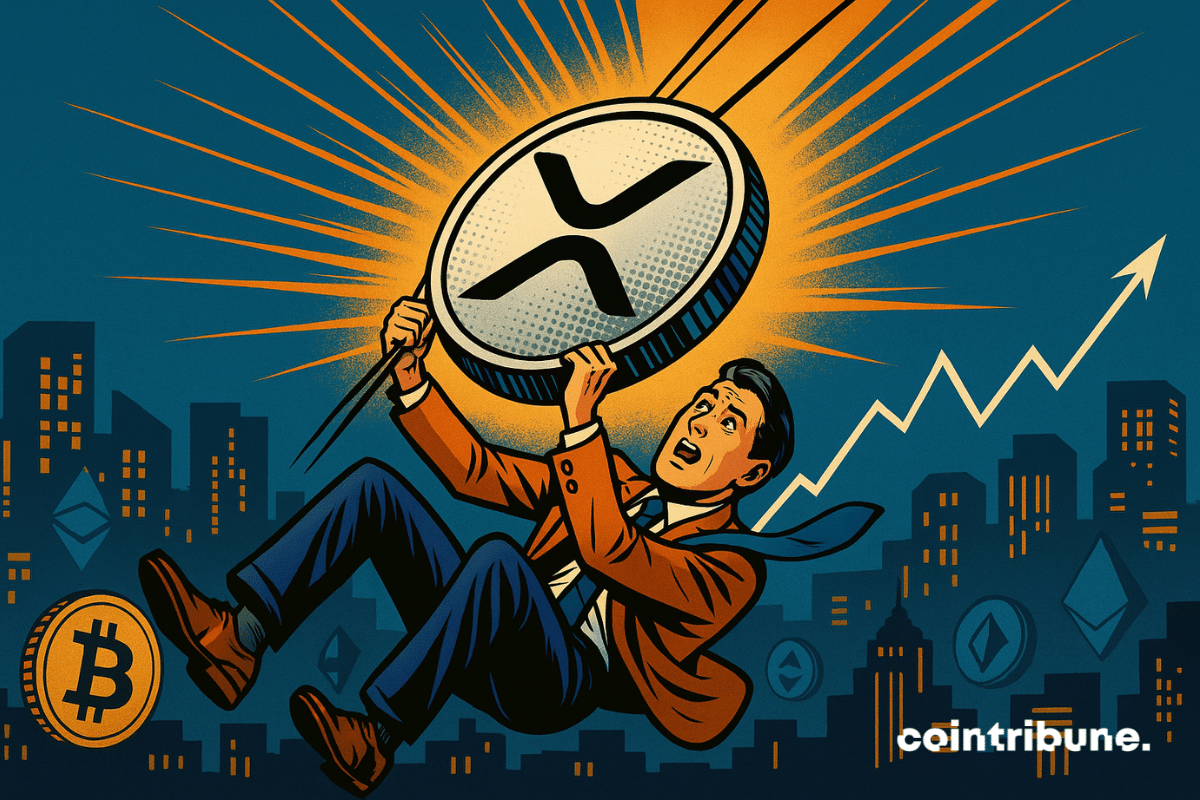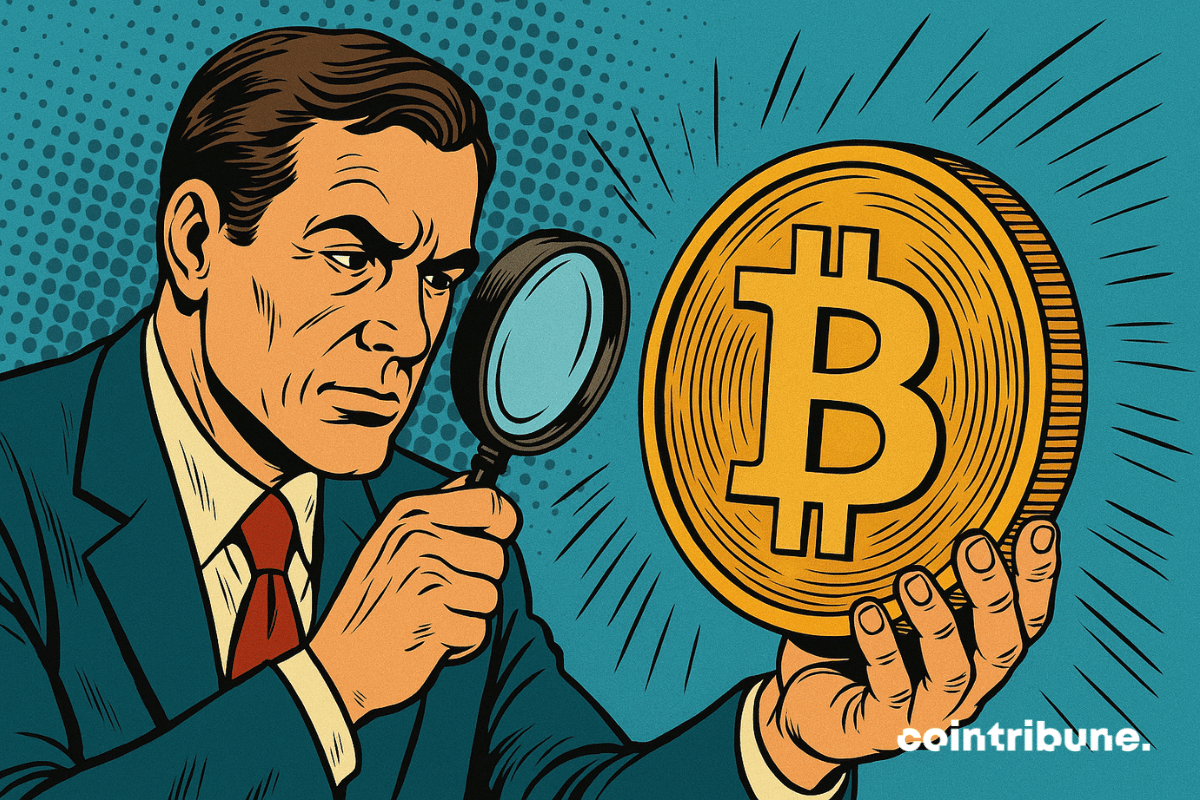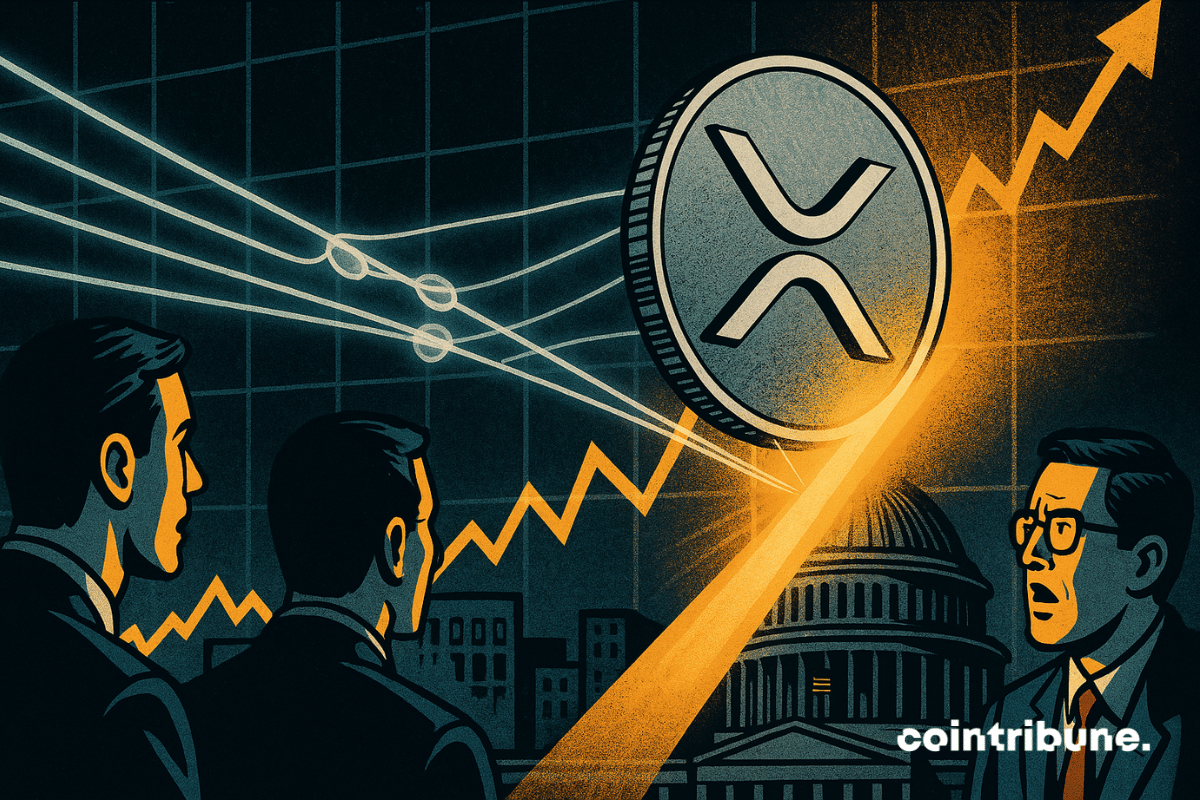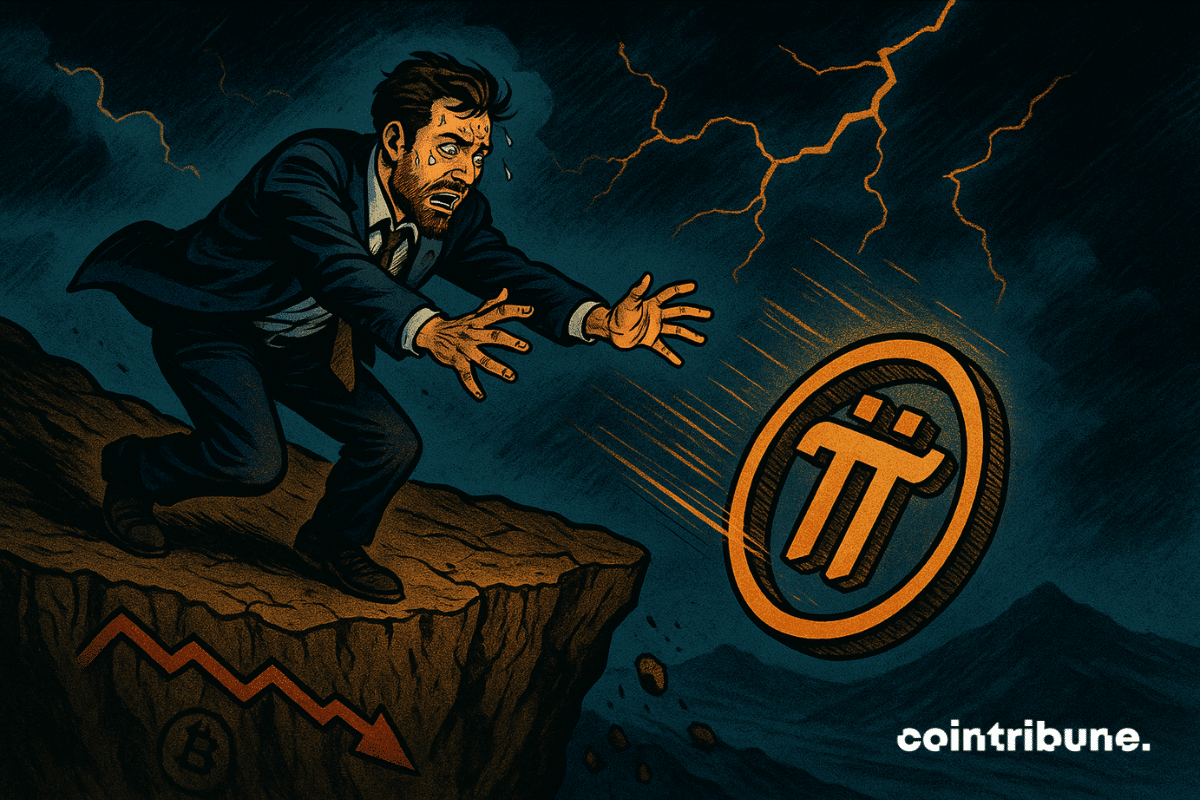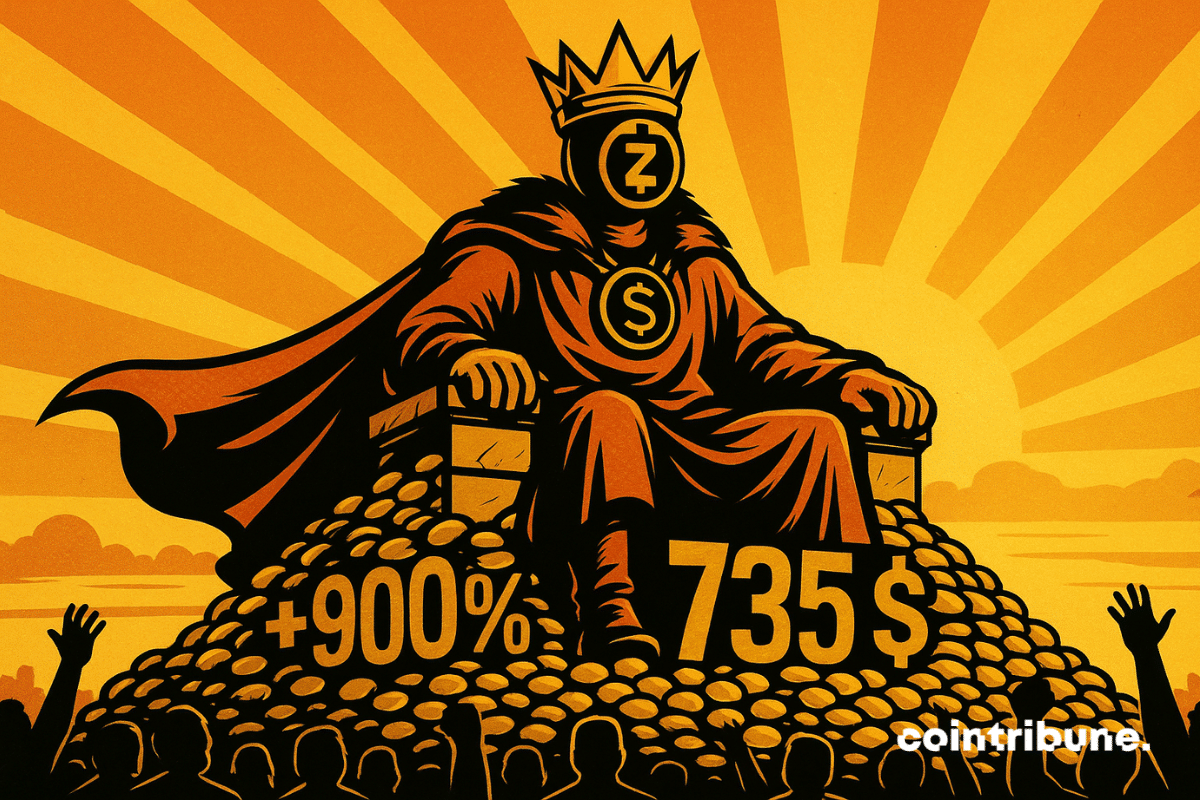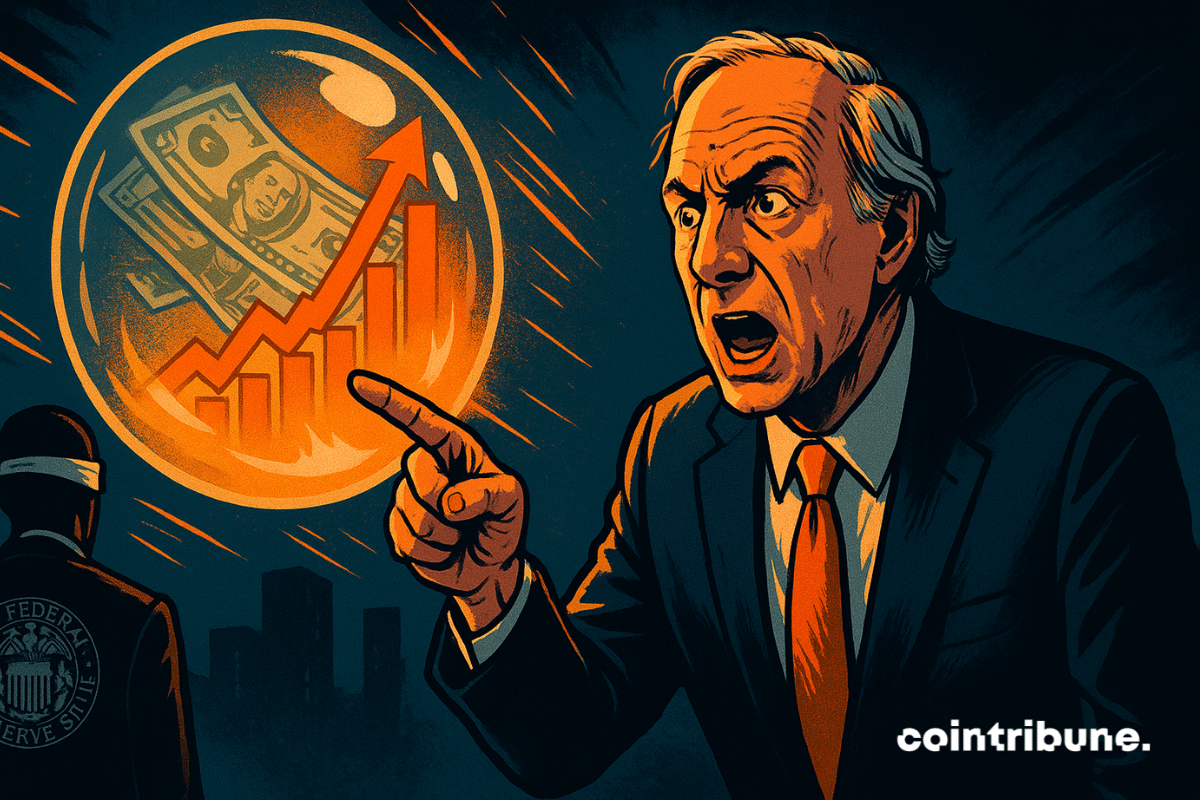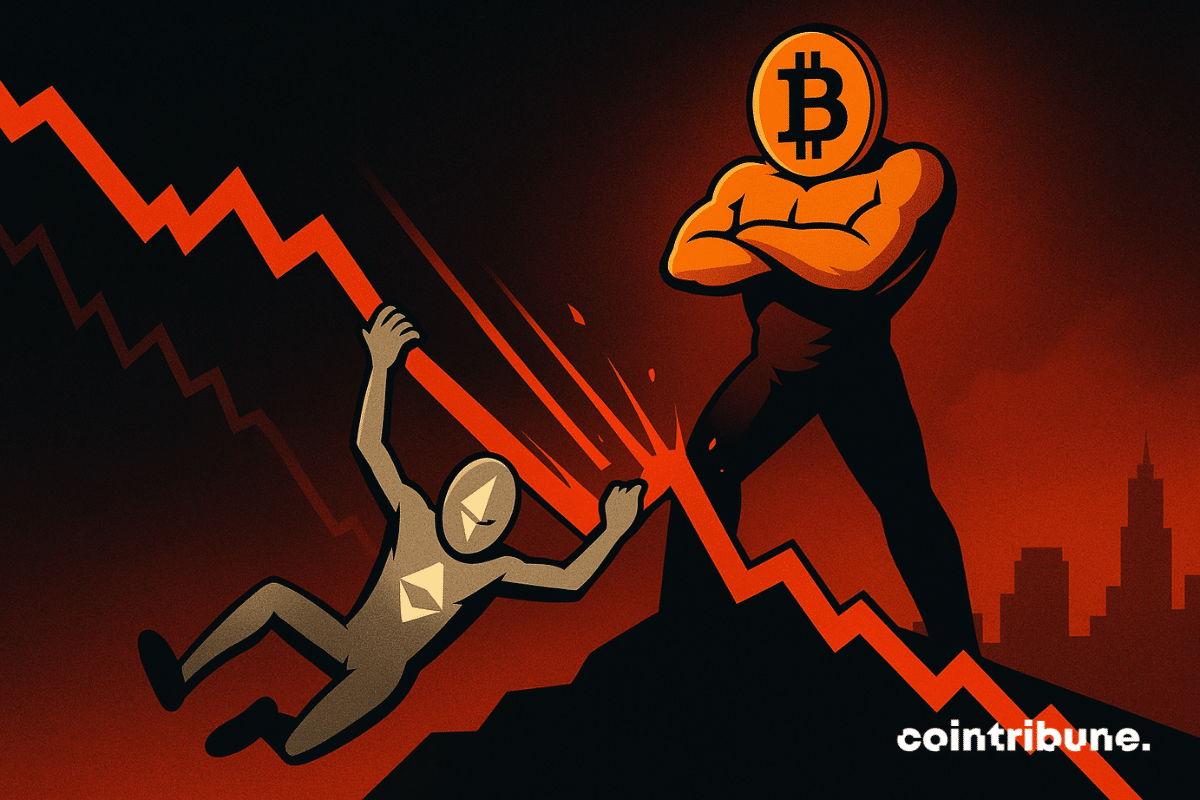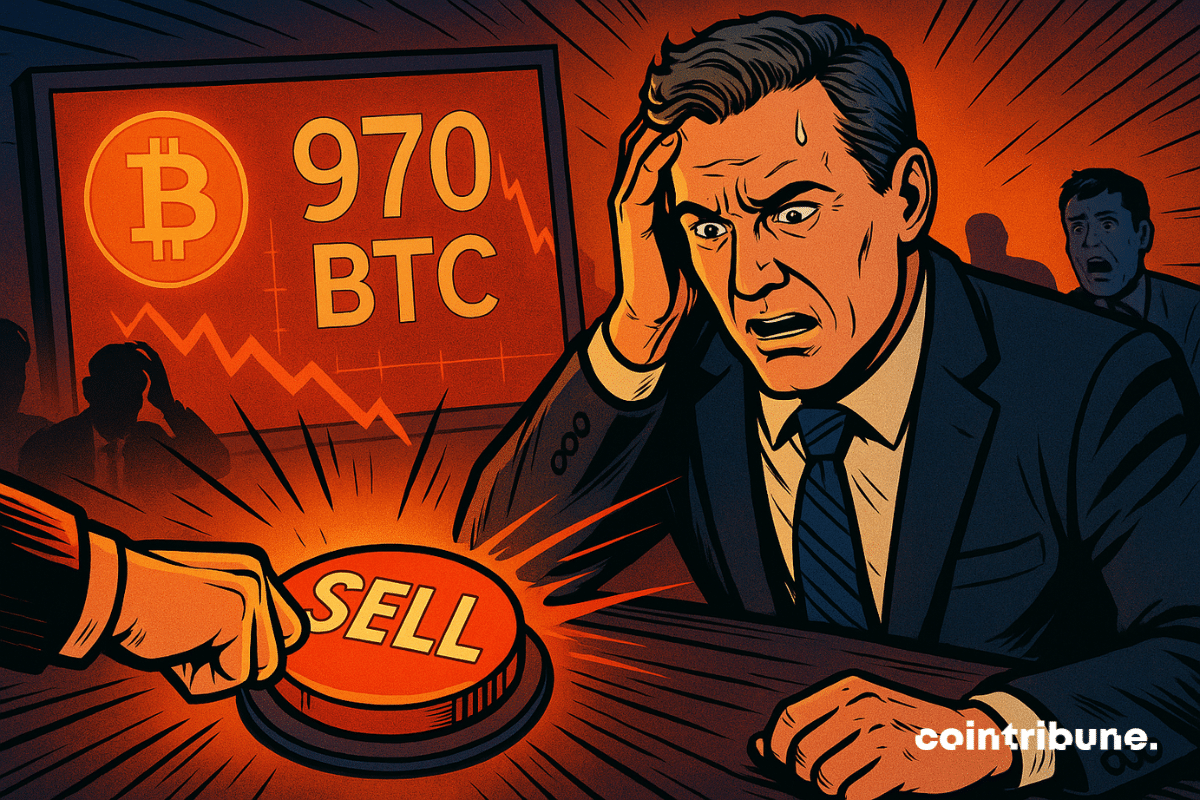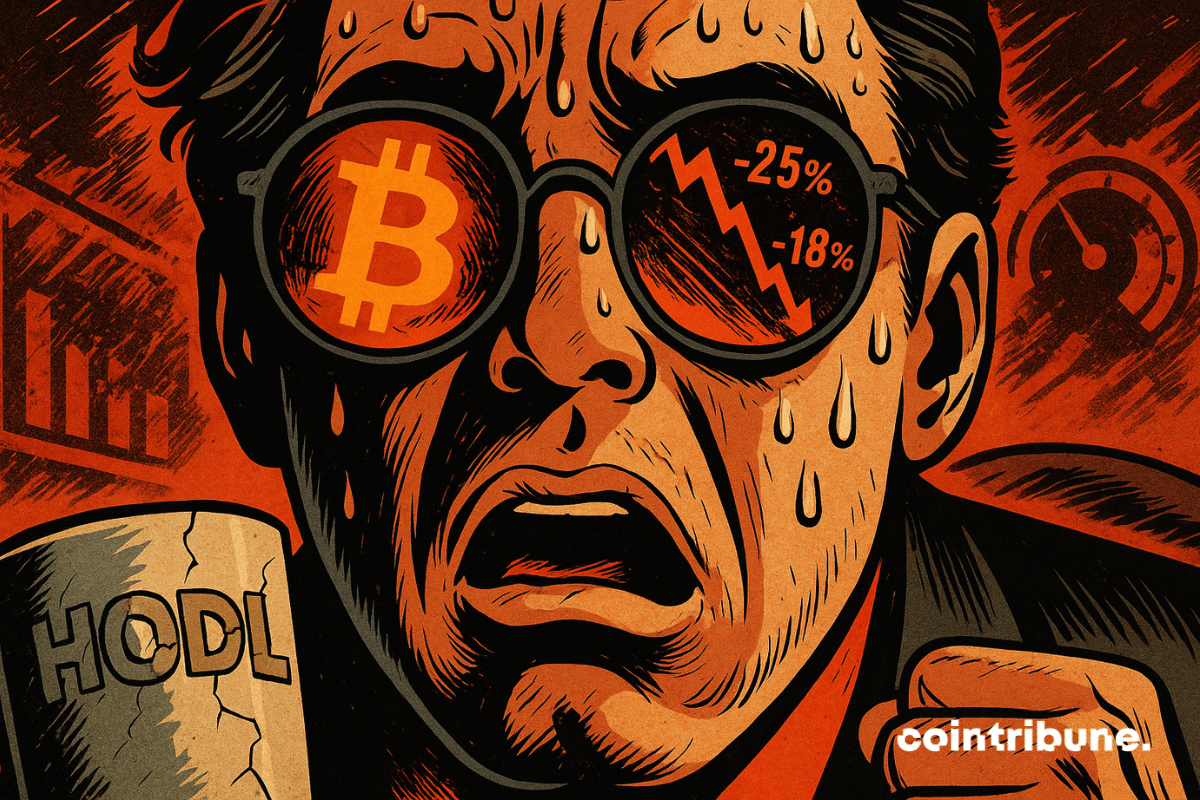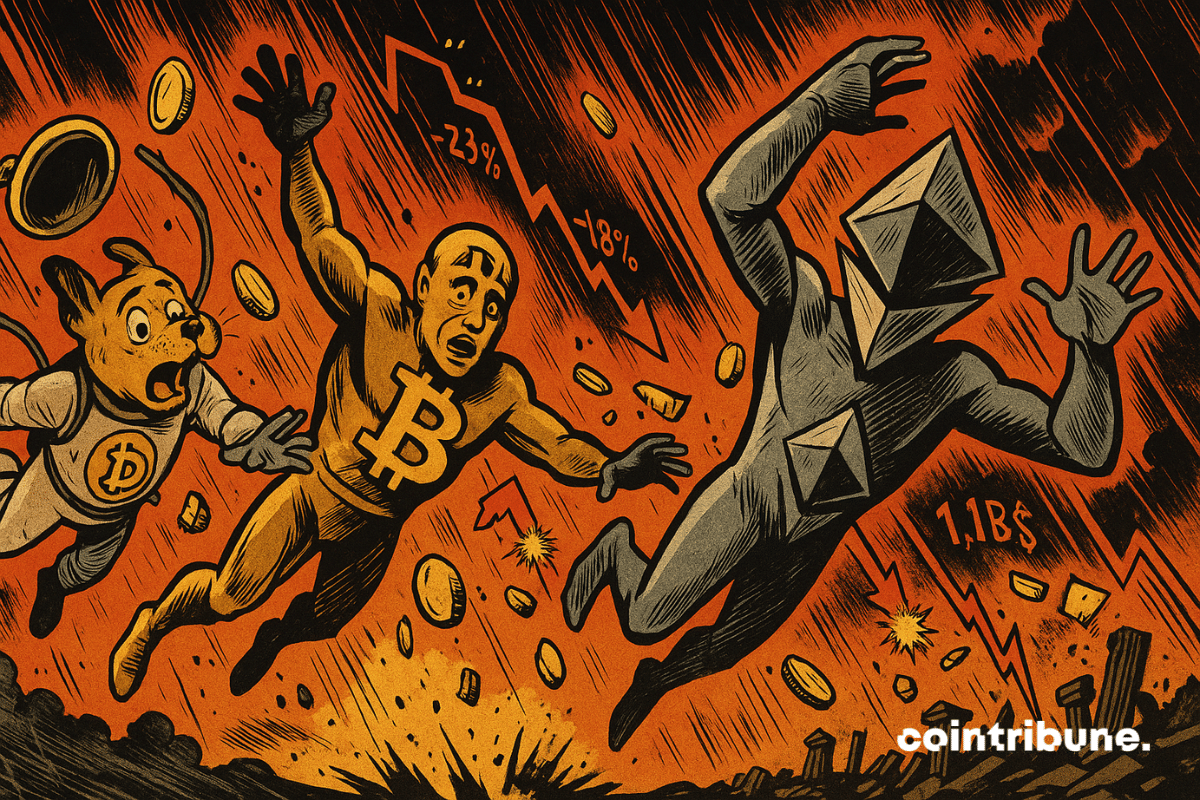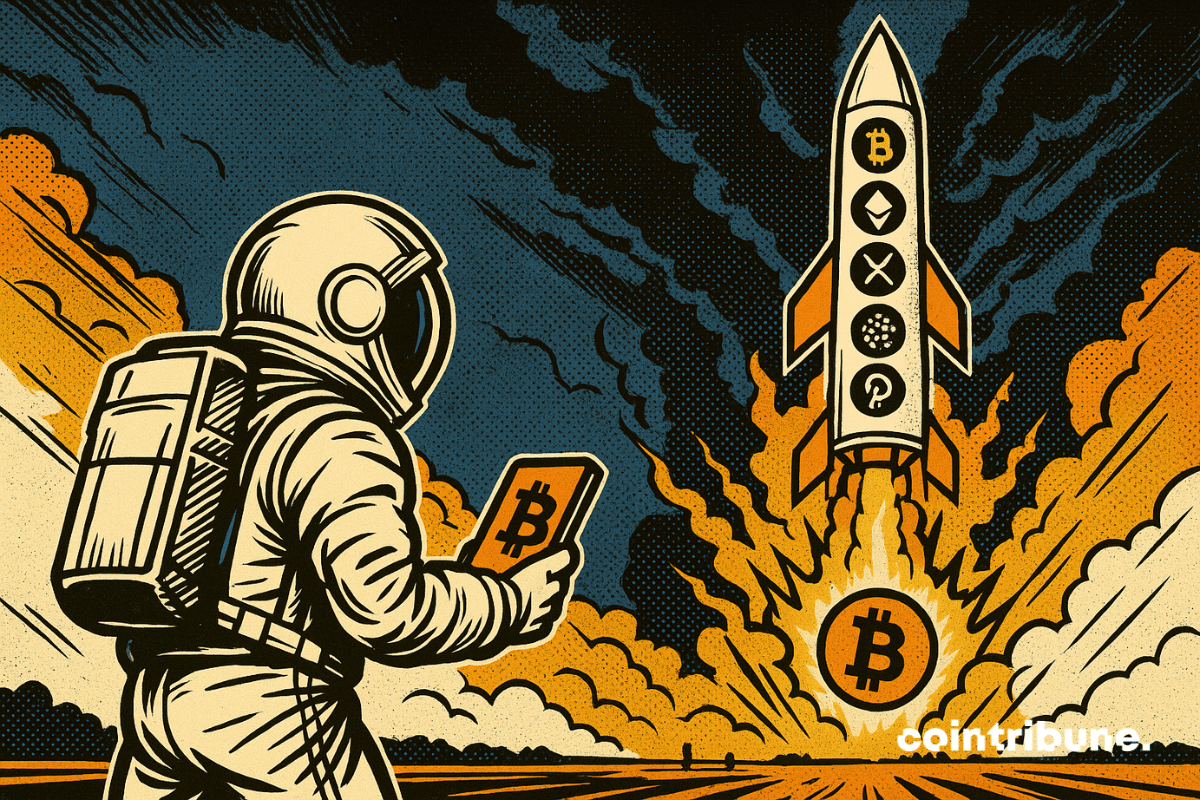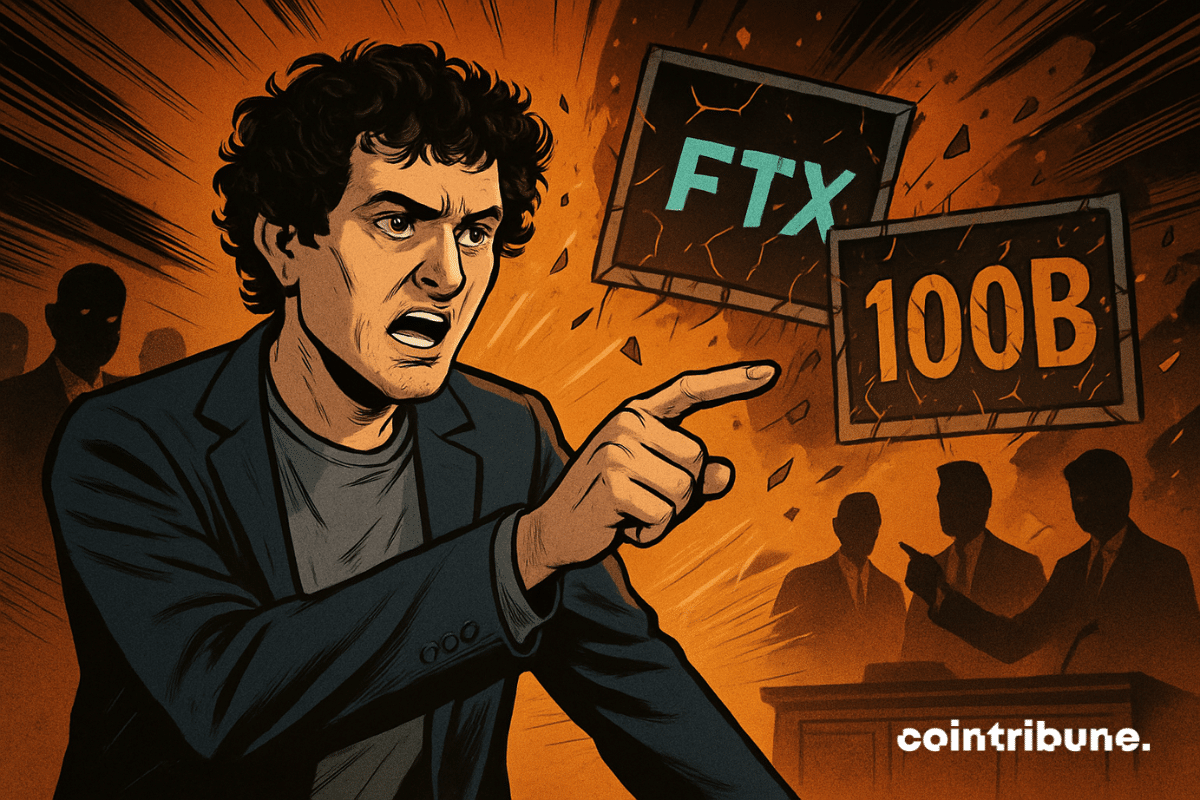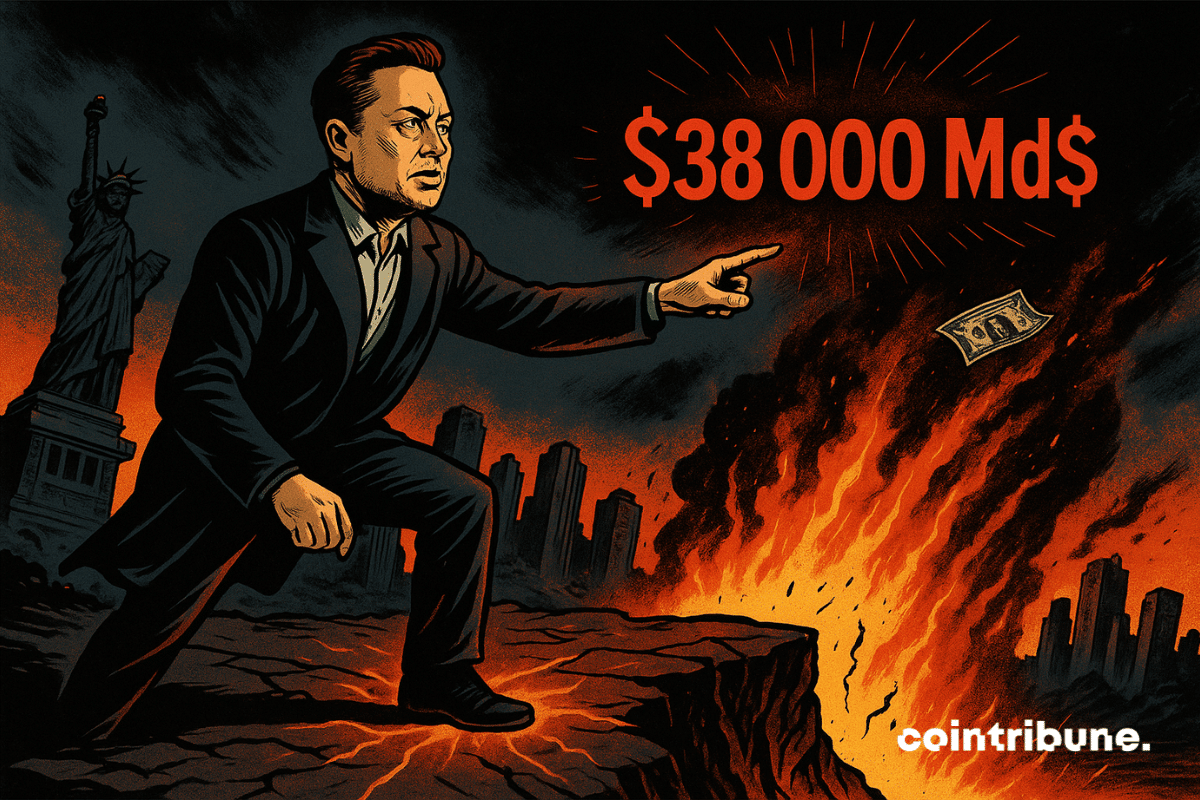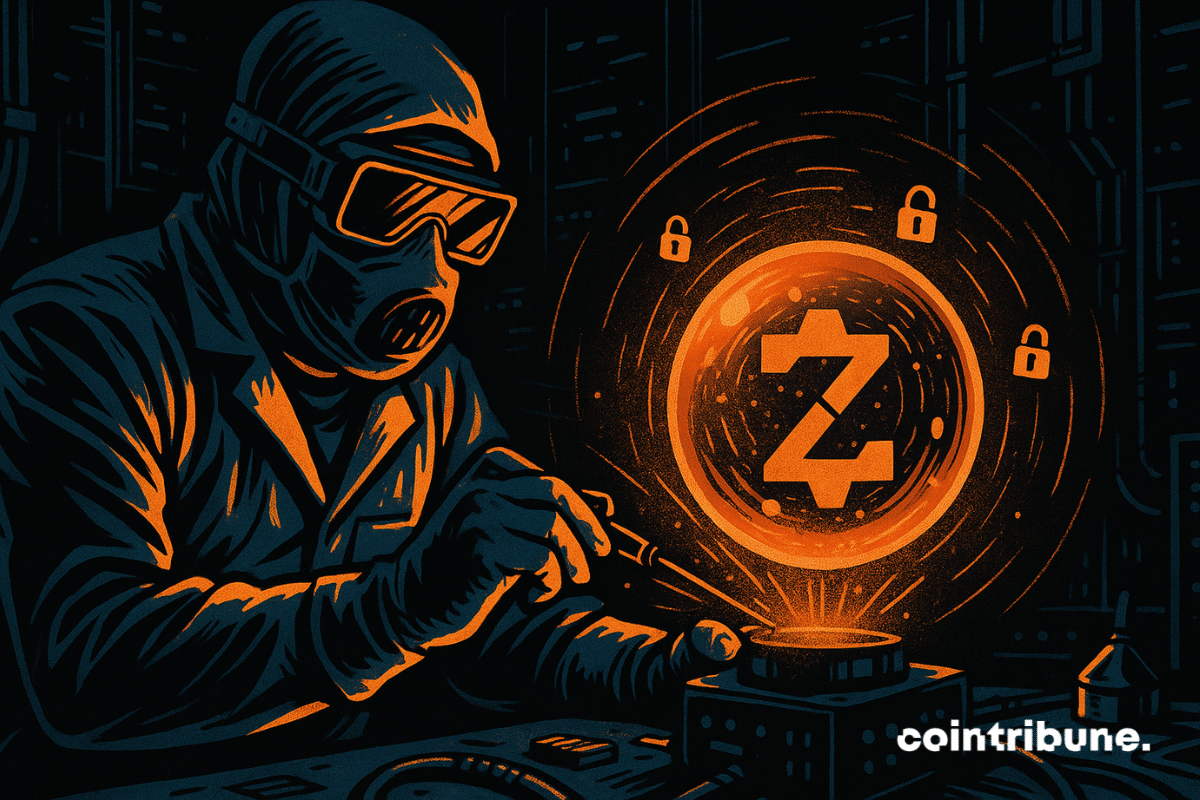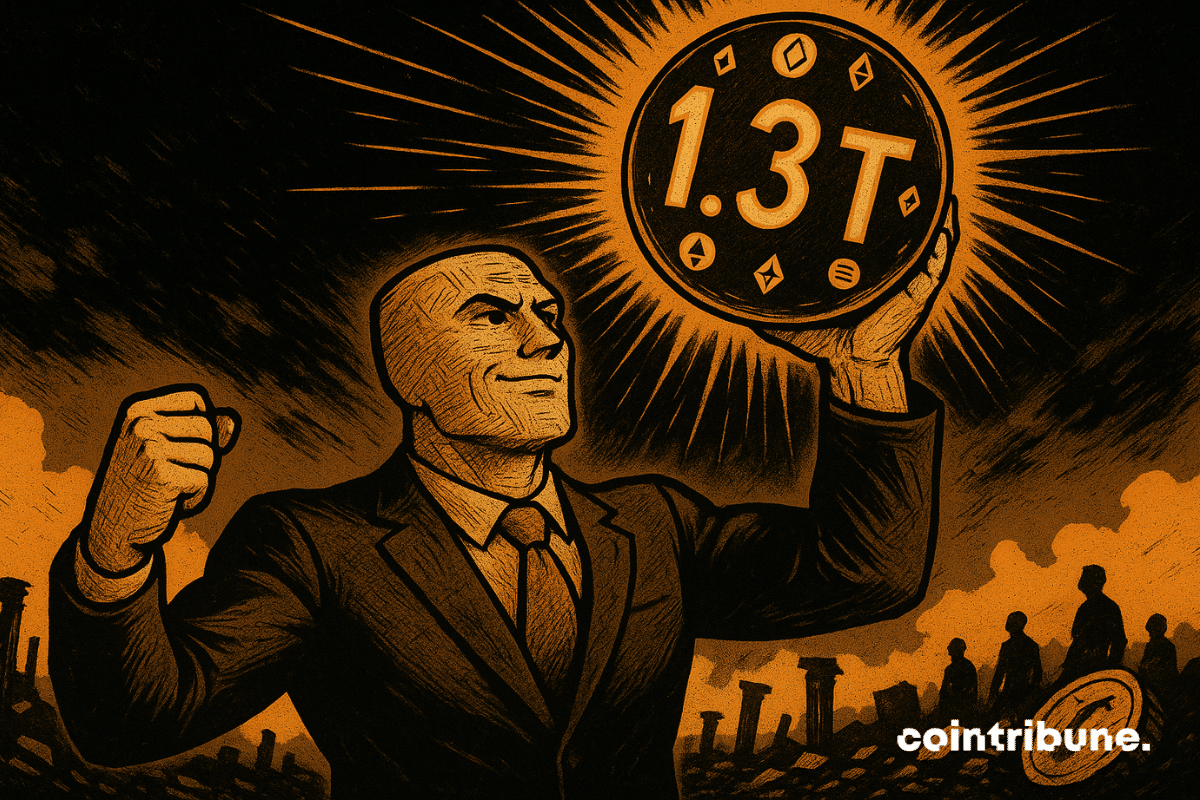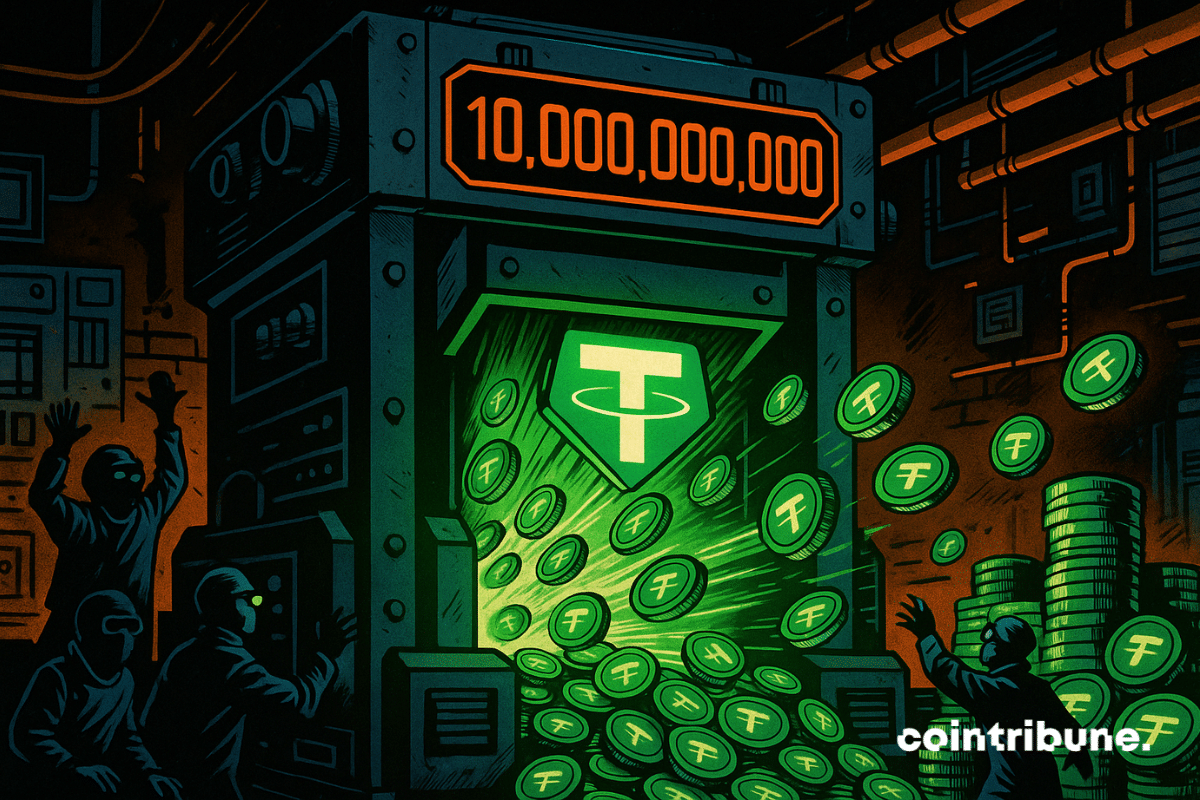While precious metals regain ground and Washington avoids budget paralysis, the crypto ecosystem wavers. Investor sentiment collapses, reaching its lowest level since March. Indeed, alarming technical signals reveal a possible breaking point. In a climate of widespread distrust, the market seems to enter a critical phase where fear now dictates movements. This abrupt trend change raises questions about the solidity of the rebound eagerly awaited by industry players.
Theme Trading
XRP is entering a crucial week. While the market is still digesting recent shocks, Ripple's crypto finds itself at a pivotal stage. On one side, a major technical support resists under pressure, and on the other, hope is reborn around an XRP ETF that could finally come to fruition. Between encouraging technical signals and fundamental catalysts, conditions for an explosive move seem to be met.
Morgan Stanley warns of a possible turning point in the crypto market. In a recent analysis, the bank mentions an end of cycle for Bitcoin and recommends investors to take their gains. In a context of persistent volatility, this signal from a major institution invites caution.
While the crypto market remains under pressure due to global economic uncertainties, XRP continues to disappoint despite concrete advances. Why such a discrepancy between its fundamentals and its price? For Versan Aljarrah, a recognized analyst and founder of Black Swan Capitalist, the answer is straightforward. As long as XRP remains correlated with bitcoin, it will remain trapped by chronic volatility. This statement reignites the debate on the strategic independence of Ripple’s flagship asset.
Bitcoin was supposed to take off after the US budget chaos. Result? ETFs on strike, Solana showing off... and investors biting their nails, eyes fixed on December.
Bitcoin’s sharp rebound, fueled by optimism over the end of the 40-day U.S. government shutdown, has split traders. While most market watchers welcomed the recovery, aggressive short sellers faced a costly squeeze. High-risk trader James Wynn is at the center of the turmoil after a series of rapid losses pushed him into an even larger short bet.
As the specter of a historic shutdown recedes in the United States, bitcoin has rebounded, surpassing $106,000. The Senate approved temporary funding, narrowly avoiding a prolonged paralysis of federal institutions. This political progress was enough to revive the appetite for risk, propelling the leading crypto into a bullish dynamic. In a market where Washington's decisions act as a catalyst, this return to stability strengthens the correlation between macroeconomic news and crypto investors' behavior.
Progress toward ending the U.S. government shutdown is driving market optimism with crypto gains and renewed ETF hopes.
In a crypto market marked by wait-and-see, Pi Network struggles to trigger a real recovery. Far from its promising beginnings, the asset now moves between consolidation levels and mixed technical signals. Some indicators show an improvement in flows but without a clear breakthrough of key thresholds. The momentum remains fragile, and the selling pressure latent. Between timid investor support and lack of a strong catalyst, Pi is going through a prolonged phase of uncertainty. The risk of technical deadlock persists.
Investors are cautious as crypto stocks face a rough week, with major firms seeing declines amid ongoing market and economic pressures.
Polymarket is regaining momentum after a long cooldown period as trading activity climbs again. User participation is also on the rise, with renewed interest from both crypto-native and mainstream audiences. Recent data shows the platform nearing the trading volumes last seen during the peak activity surrounding the 2024 U.S. elections.
Bitcoin wavers, and the market divides. While crypto suffers a drop of nearly 15% in a few weeks, a clear rift appears between small holders and institutional investors. While the former take advantage of the decline to strengthen their positions, the whales quietly liquidate thousands of BTC. This strategic gap, observed by the Santiment platform, could mark a decisive turning point in the market's evolution.
While bitcoin is bogged down in divisive institutional adoption, an old privacy token makes a spectacular comeback. In five weeks, Zcash (ZEC) went from obscurity to a +900% surge, reaching up to 735 dollars this Friday, an unprecedented high in nearly eight years. Stabilized around 666 dollars, the asset still shows a 74% increase over the week. This unexpected rebound shakes the market and revives the debate on crypto privacy.
The US Federal Reserve stimulates the economy even as markets soar and employment remains strong. For Ray Dalio, this unusual combination bodes ill. The legendary investor sees it as symptoms of the end of a major economic cycle, where excessive debt forces monetary authorities to play with fire.
Google Finance is upgrading with AI, integrating Kalshi and Polymarket data to provide smarter market insights and real-time event predictions.
What if the role of store of value promised to bitcoin in emerging economies was slipping away? This is a hypothesis that Cathie Wood, founder and CEO of ARK Invest, now seems to take seriously. Known for her strong convictions about the potential of bitcoin, the investor now lowers her most optimistic scenario, citing an unexpected dynamic: the meteoric rise of stablecoins as an alternative to BTC in certain regions of the world.
Robinhood delivered another strong quarter, posting sharp gains in revenue and profit as crypto activity surged. Markets pulled back slightly after hours, but the company’s year-to-date rally remains among the strongest in publicly traded fintech and crypto-adjacent firms.
The drop of bitcoin below 100,000 dollars has revived tensions in the market, shaking a symbolic threshold for investors. Behind this technical retreat are more complex signals. While some fear a lasting bearish trend, several influential voices in the sector see it as a transitional phase, carrying potential for a rebound. Between behavioral analysis and macroeconomic dynamics, this correction could mark much more than a simple temporary adjustment.
As the crypto market holds its breath, a note from 10x Research reignites the debate. Ethereum is now a good candidate for shorting. According to the firm, betting against ETH could provide effective coverage against the institutional rise of bitcoin. This strategic reading shakes up the hierarchy between the two main assets in the sector.
Sequans, bitcoin's friend just yesterday, quietly dumps 970 tokens: tactic or panic? Meanwhile, crypto markets are tying themselves in knots with their wallet.
Bitcoin has just fallen back below $100,000, reviving doubts about the strength of its upward trend. Behind this symbolic threshold lies a weakened market, caught between weakening demand and macroeconomic tensions. For CryptoQuant, the threat is clear. If this support does not hold, BTC could plunge to $72,000 within two months. A scenario that worries, as technical and fundamental signals turn red.
While traditional markets waver under the weight of macroeconomic uncertainties, the crypto ecosystem goes through an unprecedented turbulence zone. Bitcoin falls below $104,000, dragging all other assets along with it. However, this correction goes beyond the usual volatility. Investor sentiment collapses, switching from optimism to extreme fear in a few days. This sudden reversal marks a major trend break, which could well redefine the market balance in the short term.
In a rebuilding sector, Ripple takes a strategic step by launching its primary spot brokerage service aimed at American institutions. This turning point, made official at the Swell 2025 conference in New York, relies on the acquisition of Hidden Road, finalized in October. By betting on an integrated infrastructure, Ripple intends to capture a growing demand for professional asset trading services, at a time when market standards are being redefined.
The crypto market experienced a sharp decline at the start of the week. While US stocks remained in the green, Bitcoin, Ethereum, and Dogecoin collapsed, triggering over $1.1 billion in liquidations within 24 hours. A sudden drop, without a clear catalyst, revealing the weaknesses of an ecosystem still unstable and vulnerable to panic movements. This massive setback rekindles doubts about the market's strength and investors’ resilience amid an ever unpredictable volatility.
As the crypto market moves toward a new bullish cycle in 2025, identifying promising projects becomes crucial for investors. This selection analyzes seven cryptocurrencies that, through their technological innovation and growing adoption, position themselves as strategic choices. Each project solves concrete problems and stands out against its direct competitors.
Sam Bankman-Fried Blames Lawyers for FTX’s $100B Collapse, Claims Exchange Was Never Insolvent
Facing a debt considered "unsustainable", the Tesla CEO warns: the United States is heading towards a budget wall. In a discussion with Joe Rogan, he denounces an economic trajectory that has become, in his view, "dead end". For some, this looming crisis could propel bitcoin to new heights. The asset, historically linked to distrust of the dollar, could strengthen thanks to this announced crisis.
Long overshadowed by regulatory constraints and the rise of centralized platforms, Zcash makes an unexpected comeback to the forefront of the crypto scene. Driven by a spectacular rise in its price and growing adoption of its privacy features, the project regains momentum. At a time when demand for private transactions is exploding, Electric Coin Company unveils an ambitious roadmap to assert Zcash's central role in the ecosystem.
In October, decentralized platforms reached a historic milestone. More than $1.3 trillion in perpetual contracts were traded in one month. A symbolic threshold, never reached before, illustrating a profound shift in the crypto ecosystem. Long dominated by centralized platforms, the derivatives market is witnessing a new dynamic, driven by DeFi. This rapid growth is not by chance but the result of a structural change in usage, tools, and trader confidence.
Tether has just crossed a dizzying threshold: more than $10 billion in profit in just nine months. Behind this extraordinary figure lies the rise of a key player in the crypto ecosystem. Issuer of the USDT, the most used stablecoin in the world, Tether impresses as much as it raises questions. This record profitability, revealed in its latest attestation report, triggers as much enthusiasm as concerns, especially in terms of transparency and regulation.

